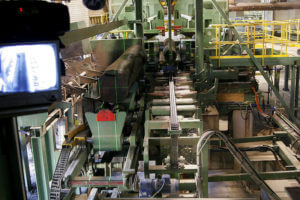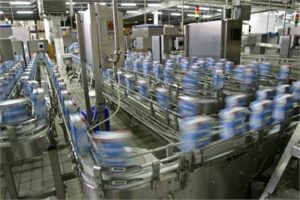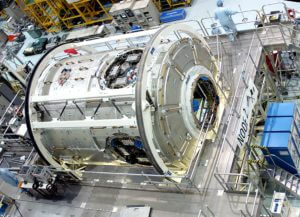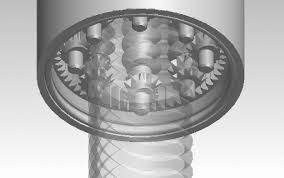
Roller screws for high force linear actuators. What type’s best?
Selecting the best screw type for a high force linear actuator can seem a daunting task, but it doesn’t have to be. Start with our Guide on the three common screw types for electric actuators, their advantages and disadvantages.

Electric linear actuator speeds up changeovers, lowers TCO
Time is money, as the saying goes, and it’s especially true in manufacturing. Reduce the time a process takes and you save operating costs. The concept of total cost of ownership (TCO) considers issues beyond a component’s purchase price like the downtime and labor costs associated with changing production set-ups.

Acme, ball and roller screws for electric linear actuators
When you’re specifying a screw-driven electric linear actuator, you’ll need to consider the type of screw that best meets the needs of your specific application. Some manufacturers give you a choice so you can tailor the device precisely, and that’s a good thing since applications differ widely.
The basic types you’ll have to choose from are roller screws, ball screws and acme screws. There’s quite a lot a machine designer needs to know about these electric actuator screw types and how to select the right one. We offer a guide that helps your decision-making.

Machine design, clean in place (CIP) and linear actuators
Keeping clean is important, right? Well, in food and beverage processing and pharmaceuticals manufacturing keeping equipment clean is essential. Cross-contamination among batches causes problems, and food or beverage residue can grow harmful microorganisms. Many plants have clean in place (CIP) systems that deliver cleaning tailored to the needs of the facility including cleaning action (force, turbulence, direction), timing/duration (when, how often, how long), temperature, and type/strength of cleaning agent.
When you design equipment for these industries you need to keep cleanability in mind. Even components like electric linear actuators must stand up to cleaning procedures.

Ball and roller screw linear actuators: How to compare service life
When you’re designing equipment, you'll probably be asked, “How long will this machine last?” And even if you’re not asked outright, you know service life is an essential consideration. It’s a critical factor you consider when sourcing components.
Electric linear actuators are important components in many machines, and the “how long will it last” question is a familiar one. If it’s a ball or roller screw actuator, you can use a formula to help estimate life based on load – the same formula used to estimate bearing life.

Corrosion resistant integrated linear servo actuator is high force
The electric rod actuator is an industrial workhorse, one you’ll find in a wide range of machine tool, conveying and positioning applications. A familiar mechanism, yes. But identifying one that’s compact, corrosion resistant and can deliver high force is a tall order. A corrosion resistant integrated linear servo actuator can be the answer.

Hydraulic vs high force electric linear actuators: new infographic
Choosing the best linear actuator for a task takes a thorough understanding of the application. The basics like the weight of the load, the distance the load’s to be moved, and the speed and force needed are all important factors. A machine designer may also need to consider variables like environmental conditions, data collection and reporting, as well as flexibility/programmability requirements.
If the application calls for a high force linear actuator, the usual solution has been a hydraulic cylinder. However, high force electric linear actuators are now available (many with roller screws) and offer distinct advantages. Our new infographic compares the performance of electric, hydraulic and servohydraulic actuators on intelligence and operational parameters.

Electric linear actuator ebook: A resource
Industrial automation counts on the reliable motion control that linear actuators provide. Lately, electric linear actuators have gotten more popular because they offer better control of variables like speed, acceleration, position and force than pneumatic or hydraulic cylinders. Electric actuators also offer superior accuracy and repeatability, as well as programmable control that can handle even complex motion profiles. In many applications, they can do all this at a lower cost of ownership than pneumatic or hydraulic actuators.

Electric high force linear actuators with roller screws rival hydraulic
When you’re specifying a high force linear actuator, your application’s requirements call the shots. It used to be that hydraulic cylinders were your only recourse when high force was needed. Now there are electric linear actuators with roller screws that rival the high force, high thrust, high torque capabilities of hydraulics. Plus, these electric actuators deliver high speed, great accuracy and repeatability and long life. Electric roller screw actuators are definitely an alternative to consider.

Choosing the right linear actuator [INFOGRAPHIC]
When your design calls for a linear actuator, you have lots of choices. Pneumatic, electric, rodless, rod, belt driven, screw driven. These are just some of the options available.

 Ask an Engineer
Ask an Engineer